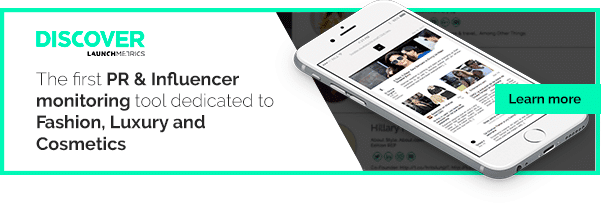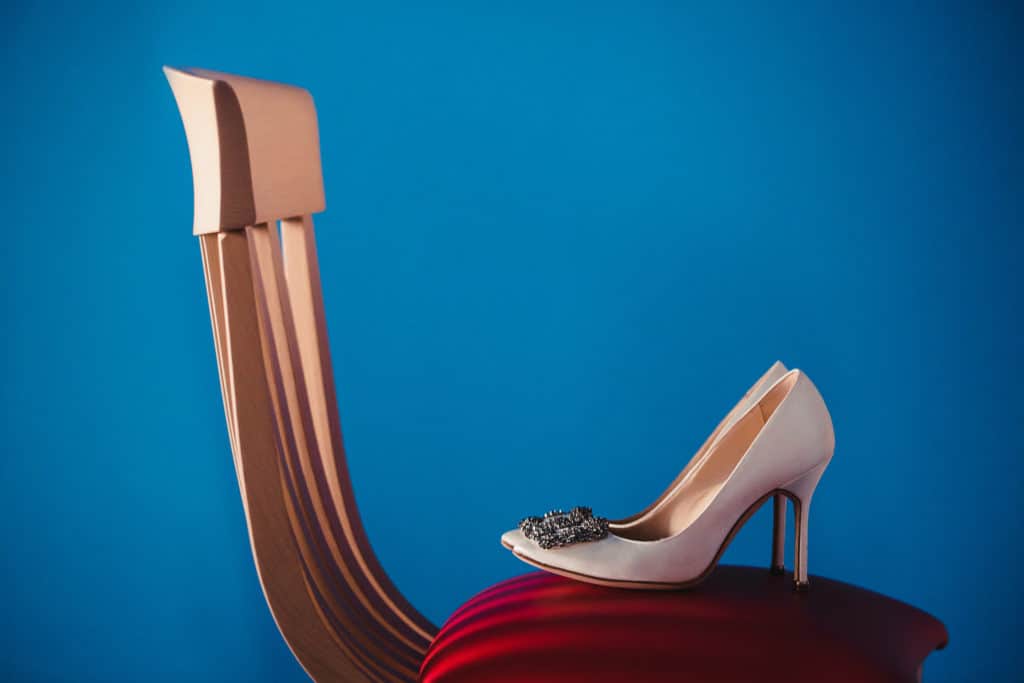Digital media is constantly evolving and presenting new possibilities to promote a brand's product via product placement strategies. These are the best practices and points to bear in mind.
As you read the words “product placement” your brain is probably digging into the depths of your memories, where you’ve stored scenes of movies which made you fall in love with brands, such as James Bond driving up in his Aston Martin or E.T. eating Reese’s pieces. No matter what generation you’re from, you’re most likely able to recall a classic product placement scene. We’re so used to seeing it by now – in movies, series, at red carpet events and now all over social media – that most of us probably don’t even realize we’re looking at product placement when it’s right in front of us.
Product placement and its effectiveness continues to triumph in the marketing world and this is especially true in the realm of fashion. Think of Sarah Jessica Parker and her undyingly popular character, Carrie Bradshaw, and how she made every girl want a pair of blue-satin Manolo Blahnik heels. Or, looking further back, Audrey Hepburn and her timeless black Givenchy dress she wore while biting into a pastry in front of Tiffany & Co.
It’s not every day that a designer manages to get their garments featured in a movie or series, or even on the red carpet, but every brand can work on executing a product placement strategy within their budget thanks to social media. Even major luxury labels such as Jimmy Choo are eschewing traditional advertising and opting to promote their campaign solely on their own channels, while smaller, lesser known labels with little-to-no advertising budget are succeeding in quickly creating demand by marketing their products on platforms such as Instagram.
Here’s a breakdown of the different types of product placement to help you define your strategy and choose what’s best for your brand, to boost visibility:
In this article you’ll learn…
YouTube
After the vlogger boom in 2015, it’s impossible to ignore this new format and how effective it can be. The truth of the matter is vloggers are much more relatable and connect extremely well with their audience, because they themselves represent their audience demographic. The vlog videos seem genuine, effortless and honest, and because of this, viewers are very likely to take these influencers' advice on products.
The most common types of product placement on Youtube are simple product placements, reviews and brand-sponsored videos:
- Simple product placement – this is the most subtle way of going about it. The vlogger may casually pick up a product in the video, mention the name of the product without going into detail, and continue with their topic.
- Review – in a review the vlogger goes into detail about the product their advertising. They usually talk about the characteristics and why they “love” the product, but in the review they most likely talk about other brands' products as well.
- Brand-sponsored video – when a vlogger has a huge following, a brand may be willing to dish out more money to have the video entirely or mostly dedicated to their product. An example of this is Ingrid Nilsen’s partnership with Dove:
Of course, there are many examples of paid product placement in fashion all over Instagram, however, one of the best things about Instagram is that “product placement” can happen without even endorsing it. Many Instagrammers tag brands they love in their photos without any sort of sponsoring, creating visibility for the brand
Handbag label Manu Atelier quickly built a viable business from Istanbul, Turkey, wooing retailers such as Net-a-Porter, Selfridges and Harrods, by posting images of clients wearing their crossbody bags under the hashtag #manuspeople.
Swimwear designer Ipek Irgit also attributes much of the success of her label, Kiini, to “the wonderful ladies around the world that are posting their photos to Instagram”, as she told Lyst. Igrit started with zero PR Budget and hardly ever gifted her colorful crochet-knit bikinis; she simply made the most of user-generated content. In a year's time, she went from having fewer than 10,000 followers on Instagram to 155,000 and saw her wholesale accounts triple. She now has over 274,000 followers.
Points to Consider When Planning your Product Placement Strategy
Product placement is popping up in different formats via Facebook Live, Instagram Live and Instagram Stories. Regardless of your budget, it's essential to take advantage of these channels to maximize visibility. Working with influencers is a great way to do this, but ultimately the most important thing is to collaborate with an Instagrammer, blogger or vlogger based, not only on the number of followers, but on the relationships they build.
"The concept of working with the “influencer” is part of a bigger picture aimed at telling the brand’s story in a manner which is relevant to our audience - or to reach a new audience. The amount of contents on social media nowadays is at a point where one can’t assume to influence an audience solely thanks to a high number of followers. We work with those who have an affinity with our brand, and are relevant within a certain market segment. Working with more web influencers simultaneously on the same content, is an opportunity to gain visibility for both niche brands as well as brands that are more known. In this day and age, the process of diffusion to the outside world can’t exclude these representatives with whom we collaborate, when a project or product is deemed appropriate for a younger, fresher, less corporate style of communication."
As digital media continues evolving and new possibilities for product placement arise, it's increasingly important for brands to monitor their efforts. Luckily there are platforms and tools available with specific algorithms that have been formulated to help analyze product placement campaigns. Seeing as the number of followers is not the best indicator of an influencer's power of conversion, it's also important to bear the engagement and click-through rates in mind.
Another factor to consider when planning your product placement strategy is the regulations placed on native advertising and paid campaigns. Native advertising, which came onto the scene in 2013, is a "softer" way of selling; its providing the consumer with content that they feel is useful. Even though this form of advertising is more subtle, consumers are 50% more likely to purchase the product after seeing this type of content. It's important for influencers that you collaborate with to use hashtags stating that the post is an advertisement. If you have any doubts about this, I suggest you listen to our latest webinar with the Fashion Law Institute.
The product placement boom what we've been witnessing on social media lately is proof in itself that it does, indeed, work. However, this doesn't mean that it works with every influencer. Brands should measure their efforts to make sure that they invest their money and time wisely when executing product placement campaigns.
 What do you think of product placement on social media? Leave your comments below and tell us about your experience as a brand or follower!
What do you think of product placement on social media? Leave your comments below and tell us about your experience as a brand or follower!
